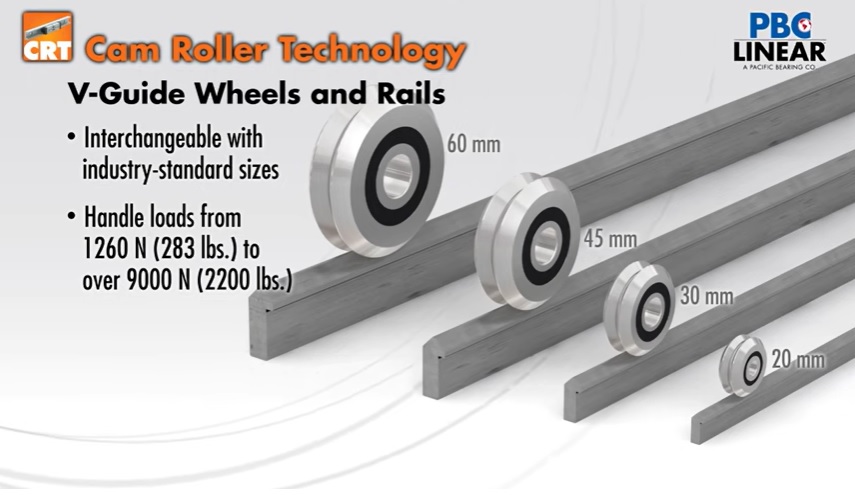Rapid Advancement at Automate 2022
Robotics and automation will continue to enhance manufacturing production for the foreseeable future
Boston Dynamics has a mobile robot named Spot that can detect anomalies and prevent manufacturing floor shutdowns. FANUC, alone, boasts 100+ robot models for high-speed, high-precision shop floor applications. There’s even a couple of KUKA robots scheduled to serve drinks at bars across the globe (Editor’s Note: See article on page 56). Robots are faster, smarter and more versatile than ever before, but it’s still that ole fashioned human element that will determine the outright success of robotic and automation technologies.
“People will always be the most important part of an automated solution,” said Jeff Burnstein, president of the Association for Advancing Automation (A3). “The plant managers, engineers and designers will be able to take advantage of these technologies by letting the robots handle the dangerous and dirty work while they focus on designing solutions, overseeing production processes and analyzing and utilizing data collected on the shop floor.”
They will all come together in Detroit, Michigan for Automate 2022, June 6 – 9, 2022 at the Huntington Place Convention Center to discuss the latest trends and emerging technologies in areas like robotics, automation, mechatronics and motion control. Burnstein, a 40+ year vet of the industry, said the exhibition will examine everything from autonomous mobile robots, and artificial intelligence to collaborative robots and enhancements to machine vision.
“Attendees are going to hear a lot about workforce development and they’re going to encounter startups that are thriving in these markets,” he added. “These topics are not just some far-fetched, futuristic technologies you’d find in science fiction films— they are practical resources that can be applied across the manufacturing sector today.”
 With its 3 kg payload, 400 mm horizontal and 200 mm vertical reach, the FANUC SR-3iA is ideally suited to smaller-scale robotic assembly, pick and place, inspection and packaging applications.
With its 3 kg payload, 400 mm horizontal and 200 mm vertical reach, the FANUC SR-3iA is ideally suited to smaller-scale robotic assembly, pick and place, inspection and packaging applications.Integrated Systems & Other Trends
By combining sub-systems or sub-components into a more manageable platform, organizations can reduce operating costs, enhance productivity and improve efficiency. System integration in the mechanical power transmission segment involves areas like mechatronics and motion control.
The key to the expansion of automation lies with systems integration, according to Burnstein. “A lot of end customers deal through system integrators,” he said. “It’s the reason we highlight at least two dozen system integrators at the front of the trade show.”
Another trend is e-commerce, where we’ve seen several advancements over the past decade. The pandemic forced suppliers to find methods to get products to their customers faster.
“The pandemic had all of us sitting at home ordering things online. There was just no way all these organizations could staff up appropriately even without the pandemic. Many still had difficulties keeping up with orders during the holidays, for example,” Burnstein said. “Now every day is holiday time for a lot of these companies. This led to more mobile robots, even traditional robots involved in helping them meet the demand. This is something we’ll be keeping a close eye on not just in the United States, but globally.”
This e-commerce explosion has led to more autonomous robots, more picking technology, sortation, packaging, etc.
Data analytics is another topic that will be discussed during Automate 2022.
“You can collect all this data, but what are you really doing with it? How can this data help you better understand your processes? Companies are going to be looking for information like this. What can artificial intelligence do for me?” Burnstein added. “This is certainly of interest to small or medium-sized companies moving forward.”
A Motor City Road Map
The showrunners for Automate are excited to be returning to the city of Detroit where many of these technologies started.
“When you think about manufacturing, automation and assembly lines, Detroit is at the heart of all that. It’s a city that a strong association with automotive, but the city is expanding beyond automotive. Now you have all these other industries here like defense, pharmaceuticals, supply chain benefits being so close to Canada, etc.,” Burnstein said. “We’re impressed with how much the city and the State of Michigan is really promoting the show. It’s also great to see how important workforce development issues are here in Michigan.
The Automate trade show is committed to Detroit for 2022, 2023 and 2025 when it gets back to its biennial cycle post-COVID. “Detroit has a lot of interest in making sure our automated future has a space for everybody,” Burnstein added.
Launch Startups
The Cowen Startup Challenge, "Automate to Outperform" will take place on June 7, 2022. This year’s competition is sponsored by Cowen, a multinational, independent investment bank and financial services company. Companies entering the challenge must:
Operate in the automation space (robotics, vision, motion control, AI)
Been founded in the last five years
Raised less than $5 million USD since creation
Not be affiliated with or belonging to a larger group
Ten finalists will vie for the top $10,000 cash prize by pitching their technology solution to a panel of industry expert judges. All finalists will also be awarded a complimentary exhibit space on the Automate show floor to engage with more than 20,000 attendees.
“The imperative to automate has never been a higher priority across virtually every industry and we increasingly look to the innovative, bright minds from startup companies to lead the way,” said Peter Finn, managing director, industrial technology at Cowen. “Startup entrepreneurs play a critical role in the development of new technology, and this competition is a way for us to support and usher in new growth, while providing a spotlight for these new technologies in front of potential partners.”
Past winners include Innovative Mechatronic Systems B.V (2019) for its Archimedes Drive, a toothless gearbox; Apellix (2017) for its software-controlled aerial robotics; and Soft Robotics (2015) for its innovative gripping solution.
“There’s so much money that’s being invested in startups right now. This is a very unusual time in history for robotics and automation. I can tell you that there was a long stretch of time where people weren’t really looking to fund robotics. Now, it’s flipped. If you have a good idea in robotics, there’s venture capital available for it. Last mile delivery, any kind of advances in picking, all these machine advancements that are being discussed. This startup competition reflects the exciting changes taking place across the industry,” Burnstein said.
 The ABB YuMi cobot is designed for a new era of automation where people and robots work side-by-side on the same tasks.
The ABB YuMi cobot is designed for a new era of automation where people and robots work side-by-side on the same tasks.A Cultural Change
In the 1990s, the robotics and automation industries had its fair share of skeptics. There were concerns that the hardware couldn’t evolve like the software; there were affordability issues; a general feeling that the industries were never going to be as big or as profitable as people suggested.
“Now we’re seeing technology advances and companies able to afford investments because of new business models such as leasing, robots as a service, etc. Costs have come down and there is so much opportunity out there,” Burnstein said. “There’s all these new warehouses and distribution centers being built, for example, and they’re all going to be automated.”
 Annual order summary in North America for robotic units.
Annual order summary in North America for robotic units.While many of these gains started within the automotive industry, Burnstein reflected on the changes that took place in 2020.
“In 2020, for the first time ever most robots ordered by companies in North America weren’t for automotive applications. It wasn’t that automotive was getting smaller, it’s just that these other spaces were growing. Areas like agriculture, construction, and restaurants. By next year, there’s going to probably be much more discussion on these emerging markets that really weren’t prominent a few years ago,” Burnstein said.
Additional areas where robotic and automation demands increased in 2020 included life sciences, pharmaceuticals, biomedical and food and consumer groups.
 The PHD series offers seamless integration for Universal Robots that utilize standard PHD
The PHD series offers seamless integration for Universal Robots that utilize standard PHDpneumatic grippers.
Practicality & Purpose
The collaborative robot—or cobot—is a perfect example of how the industry is evolving. Here’s a robot intended to physically interact with humans in a shared workspace on the manufacturing floor. Burnstein said that people like what the promise of collaborative robots offer a manufacturing operation. “Smaller investments, quicker assembly, the flexibility to provide a safer working environment. Small to medium-sized companies can very easily find a situation where the implementation of a collaborative robot on the manufacturing floor will assist with a practical application.”
A3’s main objective is to provide companies with the information they need to apply these robotic and automation technologies. “This is accomplished with webinars, training sessions, case studies and trade shows like Automate,” Burnstein said. “The warehouse industry used traditional lift trucks, cranes, etc. ten years ago, but robotics and automation are playing a much larger role in that space today.”
How can collaborative robots benefit your operation? How can automation reduce manufacturing floor complexity? How can the industry simplify the tools to make these technologies more accessible? These are some of the questions that will be examined when the industry comes together in Detroit this summer.
“You need designers, installers, manufacturing leadership to play a role in this. It’s the people that are going to change the workforce in the future, and the robotic and automation technologies will reenforce these changes.”







